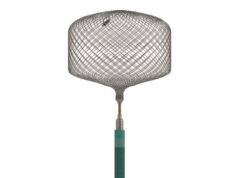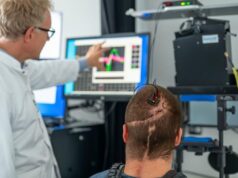
Phil Taussky outlines a simple yet effective livestreaming platform that holds benefits for neurosurgeons during the ongoing COVID-19 crisis.
One of the challenges faced by the medical community during the COVID-19 pandemic has been how to continue training students, physicians, and medical device representatives, despite restrictions on travel and hospital capacity.
Over the past year, those precautions have significantly affected our ability to teach by diminishing opportunities for in-person observation in operating rooms. Fortunately, an emerging strategy is poised to improve the accessibility of procedural education, both during the pandemic and after it has abated.
Using a simple and effective livestreaming platform, our team at the University of Utah has exponentially expanded its educational reach. Having had no previous strategy for reliably broadcasting cases, we have been amazed to watch this technology close the distance between our clinicians and their trainees, allowing them to collaborate efficiently in real time, regardless of where they are in the world.
With the click of a button that connects the procedure room to the tablets or laptops of viewers, the pioneering platform by Avail Medsystems has also enabled another instructional breakthrough: our ability, for the first time ever, to broadcast emergent procedures at a moment’s notice.
The world is our classroom
Neurosurgery is a rapidly evolving field that benefits almost monthly from the introduction of new procedures and technologies. Given that environment, we have a continuing need to share our experience, expertise, and skills, and the Avail System facilitates that.
In its most obvious application, this compact, high-tech mobile workstation allows us to broadcast live from our operating room or angio suite to medical students, residents, fellows, physicians, sales representatives, and device engineers. Conversely, the hardware-and-software platform can support physicians who want a more experienced colleague “looking over their shoulder” as they conduct a procedure—without having to fly in an expert.
Our team has found the technology especially helpful in swiftly and effectively teaching field representatives from Medtronic and other medical device companies how the tools they provide are used in practice. While observing procedures, the representatives learn about anatomy, equipment, and procedure-room setup, becoming better prepared to develop new devices and support physicians in their use.
But perhaps the platform’s most transformative implementation has been the livestreaming of stroke treatments. Through the use of novel devices, stroke thrombectomy has become one of modern medicine’s greatest advancements, yet many in the field have never seen one performed. Until recently, inviting them to observe the procedure was nearly impossible, as these cases are emergent, and time is of the essence. Today, we can effortlessly loop them in through the Avail System.
Meeting students where they are
Avail’s platform—available through a subscription-based fee without any capital expenditure—is simple to use.
It includes high-definition cameras, a screen, and plug-ins for imaging sources, offering views of the surgical field, the physician’s hands, the inside of the patient’s body, the team members conducting the procedure, and the back table holding surgical equipment. Users can remotely control the angle and zoom function of the cameras while monitoring imaging, such as intravascular ultrasound (IVUS), fluoroscopy or biplane fluoroscopy. In addition, through two-way audio and an annotation system, audience members can speak with and communicate in real time on screen with the broadcasting practitioner.
When I conduct procedures using this system, I feel as if learners are with me in the room. The important difference, however, is how many of them can attend. Once they are connected to the Avail System, participants can use apps like Zoom or Teams to share the livestream with hundreds of others—classes of medical students, for example—a capability we consider extremely exciting.
We also appreciate the fact that viewers can be engaged in other activities until the moment they tune in, whether in their homes, at work, or even, in one recent case, at a ski lodge. We live in an increasingly mobile society, and our educational strategies need to account for that. We must, quite literally, find ways to meet learners where they are.
That flexibility, coupled with the ability to far surpass the limits on in-person procedure-room attendance, means that Avail’s technology will remain a valuable teaching tool long after pandemic restrictions have ended.
Ultimately, the platform provides remarkable benefits for patients. When doctors have instant access to the experience, skills and knowledge of colleagues throughout the world, the importance of the patient’s treatment setting fades. That makes the Avail System a great equaliser—one that is primed to leave surgery better and safer for all.
Phil Taussky is a neurointerventional surgeon, and section chief and chief value officer of the Department of Neurosurgery at University of Utah Health (Salt Lake City, USA).










